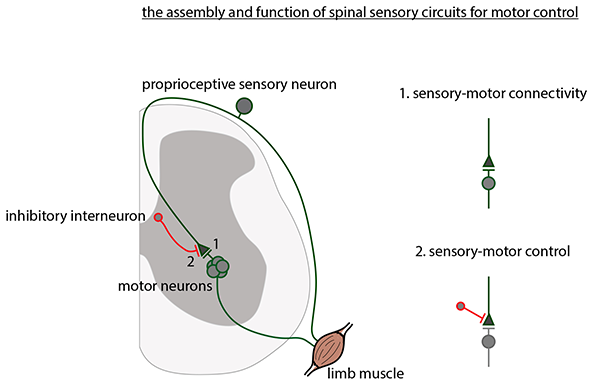You are here
The Assembly and Function of Spinal Sensory Circuits for Motor Control
Speakers
Abstract
One of the most remarkable features of the nervous system is its ability to precisely coordinate the contraction of hundreds of skeletal muscles. Whether the movement is a simple reflex, or a skilled voluntary action, the nervous system devotes considerable resources to the wiring of neuronal circuits that enable animals to interact with the outside world. At the core of these circuits lie motor neurons, which translate neuronal computations into actions with respect to the biomechanical properties of each animals’ musculoskeletal system. These computations critically depend on sensory feedback, which constantly updates motor neurons with the state of each muscle contraction, and its dynamic regulation by inter-neuronal networks. For precise sensory-motor control, therefore, the nervous system needs to address two issues: first, to ensure that sensory-motor circuits are selectively wired; second, to ensure that sensory feedback is precisely tuned to accommodate the subtleties of motor output.
In this seminar I will touch upon these issues. First, I will present our view on how proprioceptive sensory neurons form selective mono-synaptic connections with motor neurons. Here, I will argue that in contrast to the prevailing view on the role of cell-cell recognition in neuronal wiring, selectivity of sensory-motor connections can be largely explained by a recognition-independent mechanism that relies simply on axo-dendritic geometry and positioning. Second, I will present preliminary results on the genetic organization of a sub-population of spinal GABAergic interneurons that pre-synaptically control the transmission of sensory input to motor neurons, thereby regulating the levels of sensory feedback for motor coordination.


